![]()
![]()
![]()
Use LEFT and RIGHT arrow keys to navigate between flashcards;
Use UP and DOWN arrow keys to flip the card;
H to show hint;
A reads text to speech;
84 Cards in this Set
- Front
- Back
|
phylogenetics |
the study of evolutionary relationships |
|
|
taxonomy |
the science of naming, classifying, and identifying living things |
|
|
naming |
Assigning a name to an organism with its genus and species ex. we call ourselves Homo sapiens. |
|
|
classifying |
categorizing different organisms ex. we place ourselves together with the chimpanzees and the apes in the family Hominidae in the mammal order Primates |
|
|
identification |
Observing distinct characteristics of an organism to identify it |
|
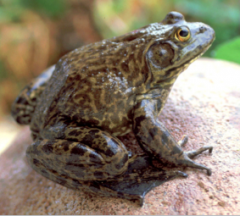
|
bullfrog |
|
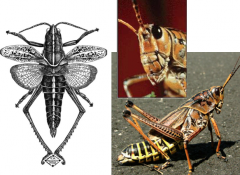
|
lubber grasshopper |
|

|
crawfish |
|
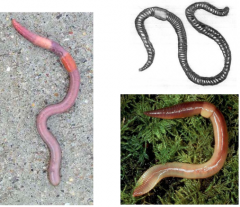
|
earthworm |
|

|
sandworm |
|
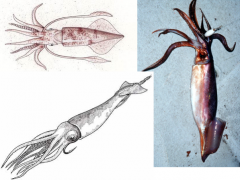
|
squid |
|
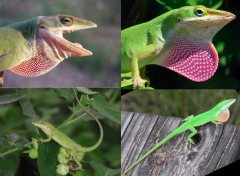
|
anole |
|
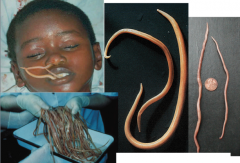
|
large intestinal roundworm |
|

|
centipede |
|
|
A taxonomic key is used to |
identify |
|
|
Father of Taxonomy |
Carolus Linnaeus |
|
|
Hierarchic system of classification |
Domain Kingdom Phylum Class Order Family Genus Species |
|
|
Supergroup of plasmodium |
Chromalveolates |
|
|
Supergroup of diatoms |
Chromalveolates |
|
|
Archaeplastids |
Evolved endosymbiosis relationship with a cyanobacteria - with chloroplasts bonded by outer and inner membranes - all autotrophs, include all plants |
|
|
Supergroup of Euglena |
Excavates |
|
|
Supergroup of animals |
unikonts |
|
|
Supergroup of foraminiferans |
Rhizarians |
|
|
Chromalveolates |
Originated from secondary endosymbiosis, with alveoli (flattened vesicles inside the plasma membrane) - autotrophs and heterotrophs |
|
|
Supergroup of Ceratium |
Chromalveolates |
|
|
Rhizarians |
Amoebid protozans with tests (hard outer shells) heterotrophs |
|
|
Unikonts |
With a single posterior flagellum or secondarily without a flagellum, all heterotrophs |
|
|
Supergroup of Paramecium |
Chromalveolates |
|
|
Supergroup of brown and green algae |
Chromalveolates |
|
|
Supergroup of green algae |
Archaeplastids |
|
|
Excavates |
Flagellated, protozoans, with a deep or excavated oral groove and "greatly modified" mitochondria, anaerobic respiration |
|
|
Supergroup of fungi |
Unikonts |
|
|
Supergroup of red algae |
Archaeplastids |
|
|
Supergroup of land plants |
Archaeplastids |
|
|
Supergroup of Trypanosoma |
Excavates |
|
|
Supergroup of stentor |
Chromalveolates |
|
|
Supergroup of amoeba |
unikonts |
|
|
Relative size of T-bacteriophage virus |
0.225 um |
|
|
Relative size of E. coli |
1-5 um |
|
|
Relative size of Chlamydomonas |
5-6 um |
|
|
Relative size of Human erythrocyte |
7-8 um |
|
|
Relative size of Trypanosoma |
12 um |
|
|
Relative size of typical plant cell |
10-100 um |
|
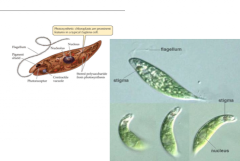
|
Euglena |
|

|
Trypanosoma |
|

|
Paramecium |
|

|
Stentor |
|

|
Ceratium |
|

|
Plasmodium |
|
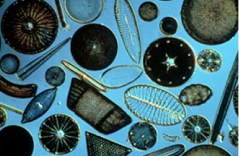
|
Diatoms |
|

|
Foraminiferans |
|
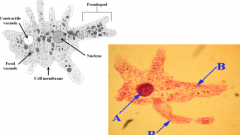
|
Amoeba |
|
|
Phylum Zygomycota |
bread mold (Rhizopus) |
|
|
Phylum Ascomycota |
sac fungi, cup fungi, Peziza, yeasts, ringworm, dutch elm disease, etc., Penicillium, |
|
|
Phylum Basidiomycota |
mushrooms, coprinus, Agaricus, bracket fungi |
|
|
mycelium |
tangled mass of individual hyphae |
|
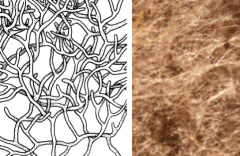
|
mycelium |
|

|
Rhizopus sporangia |
|
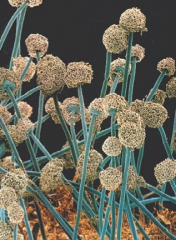
|
Rhizopus sporangia and mycelium |
|
|
Is zygosporangium haploid or diploid? |
diploid |
|

|
ascospores |
|

|
ascus |
|

|
asci |
|
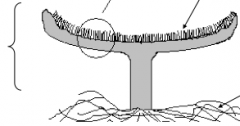
|
ascocarp |
|

|
secondary mycelium made of n+n (dikaryotic) cells |
|
|
ascocarps |
fruiting bodies of the ascomycota |
|
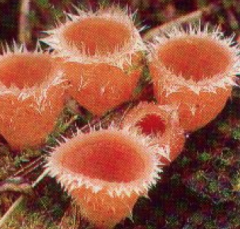
|
ascocarps |
|

|
ascospores |
|

|
ascus |
|

|
ascomycota ringworm |
|
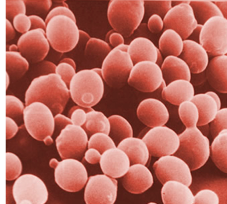
|
ascomycota yeasts |
|
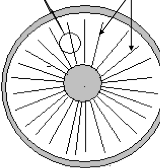
|
gills of basidiocarp |
|
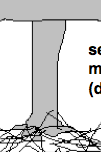
|
stalk of basidiocarp |
|

|
cap of basidiocarp |
|

|
basidiocarp |
|
|
are basidiospores haploid or diploid? |
haploid |
|
|
Phylum and genus of mushrooms |
Phylum basidiomycota Genus Agaricus |
|
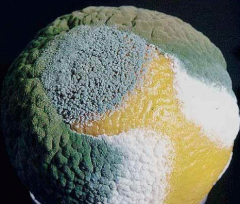
|
Phylum Ascomycota, Pencillium on grapefruit |
|
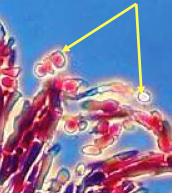
|
conidia |
|
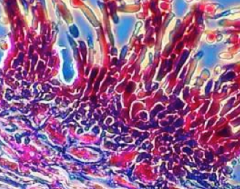
|
Phylum Deuteromycota ("imperfect" fungi) Pencillium conidiophores |
|
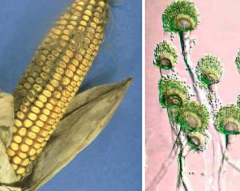
|
Aspergillus |
|
|
What do Aspergillus produce? |
aflatoxins |
|
|
Asexual fruiting bodies of Aspergillus |
conidia |
|
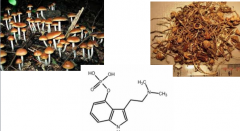
|
Psilocybe cubensis- the cowpie mushrooms |

